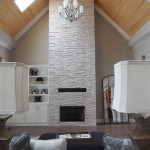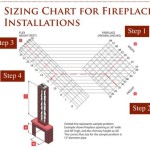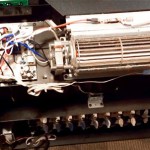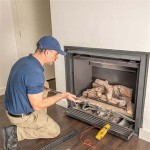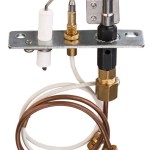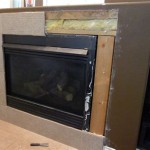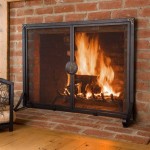Replacement Logs For Superior Gas Fireplace
Superior fireplaces, known for their aesthetic appeal and efficient heating capabilities, often rely on gas logs to mimic the look and feel of a traditional wood-burning fireplace. Over time, these logs can deteriorate due to constant exposure to heat and the combustion process. Replacing these logs is a relatively straightforward process that can significantly improve the look and performance of the fireplace. This article aims to provide a comprehensive guide to selecting and installing replacement logs for a Superior gas fireplace.
The lifespan of gas logs varies depending on the type of material they are made from, the frequency of use, and the operational temperature of the fireplace. Ceramic logs tend to last longer than refractory cement logs but can be more brittle. Regardless of the material, routine inspection is crucial. Signs that indicate the need for replacement include visible cracks, crumbling, discoloration, warping, and uneven heating. When these signs are apparent, replacing the logs is necessary to maintain the fireplace's aesthetic appeal and safe operational functionality.
Before embarking on the replacement process, it is important to gather all necessary information and tools. This includes identifying the model number of the Superior gas fireplace, measuring the dimensions of the existing logs, and understanding the BTU rating of the appliance. Having this information on hand ensures that the replacement logs are compatible and will function correctly within the existing system. Required tools typically include a screwdriver, work gloves, a shop vacuum, and possibly a wrench, depending on the complexity of the installation.
Evaluating Log Material and Types
Gas fireplace logs are typically manufactured from either ceramic or refractory cement. Each material offers distinct advantages and disadvantages related to durability, aesthetics, and heat radiation. The choice between ceramic and refractory cement often depends on individual preferences and the specific requirements of the fireplace.
Ceramic logs are known for their realistic appearance and ability to maintain their shape and detail over time. They are typically lighter than refractory cement logs, making them easier to handle during installation. Ceramic logs also tend to be more resistant to heat damage and cracking, although they can be more brittle and susceptible to chipping or breaking if mishandled. Their intricate detailing allows for a very convincing emulation of natural wood, making them a popular choice for homeowners who prioritize aesthetics.
Refractory cement logs, on the other hand, are heavier and more durable. They tend to radiate heat more efficiently than ceramic logs, contributing to the overall heating effectiveness of the fireplace. Refractory cement logs are also less fragile and less likely to break during installation or use. However, they can be more prone to developing cracks over time due to the constant expansion and contraction caused by heat cycling. They might also lose some of their initial detail as they age, but they provide a more rustic and authentic look beloved by some consumers.
In addition to the material, the type of log set is another consideration. Log sets can be categorized as vented or ventless. Vented log sets require an open chimney flue for proper ventilation, while ventless log sets do not. Superior gas fireplaces will have been designed for one type or the other, and using the correct type is essential for safety and proper operation. Using vented logs in a ventless system, or vice versa, can lead to dangerous carbon monoxide build-up and reduced heating efficiency. It is imperative to consult the fireplace's manual or a qualified technician to determine the appropriate type of log set for a specific Superior model.
Identifying the Correct Replacement Logs
Selecting the correct replacement logs involves more than just choosing a visually appealing set. Compatibility with the specific Superior gas fireplace model is essential for safety and performance. Incorrectly sized or incompatible logs can impede airflow, reduce heating efficiency, and potentially create a fire hazard.
The first step in identifying the correct replacement logs is to consult the fireplace's owner’s manual. The manual typically provides information on the recommended log set size, type, and BTU rating. If the manual is unavailable, the model number of the fireplace can often be found on a metal plate or sticker located on the firebox or behind the control panel. Using the model number, it is possible to search online for compatible log sets or contact a Superior fireplace dealer for assistance.
Measuring the dimensions of the existing logs is crucial. Log width, height, and depth within the firebox must be accurately determined. These measurements are used to ensure that the replacement logs fit properly and do not obstruct the burner or gas valve. It is also essential to consider the log placement configuration specified by the manufacturer. Incorrect log placement can disrupt the flame pattern, reduce heating efficiency, and potentially damage the burner.
The BTU (British Thermal Unit) rating of the replacement log set must match the BTU rating of the fireplace. Using a log set with a higher or lower BTU rating than the fireplace is designed for can lead to inefficient heating, incomplete combustion, and the potential for carbon monoxide production. The BTU rating is typically specified in the owner's manual or on the fireplace's identification plate.
The Log Replacement Process: A Step-by-Step Guide
Replacing gas logs is a process that requires care. Prior to any work, ensure the gas supply has been completely shut off to the fireplace. This is a critical safety precaution. The main gas valve is usually located near the fireplace or outside the house. Turn the valve to the "off" position to cut off the gas supply.
Allow the fireplace to cool completely before beginning the removal process. Hot logs can cause burns and injuries. Once the fireplace is cool, wear work gloves to protect hands from sharp edges and debris. Then, carefully remove the existing logs. Depending on the installation, the logs may be held in place by metal brackets or pins. Gently remove these fasteners, if present, before lifting out the logs. Take note of the existing log placement to aid in the installation of the new logs. Observing the log placement before removing them helps in replicating the correct configuration with the new set.
After removing the old logs, thoroughly clean the firebox using a shop vacuum. Remove any ash, soot, or debris that may have accumulated over time. This step ensures that the burner and other components are free from obstructions, allowing for efficient and safe operation. Inspect the burner for any signs of damage or corrosion. If any issues are detected, consult a qualified technician before proceeding.
Refer to the manufacturer's instructions that come with the new log set for specific installation guidance. These instructions will provide detailed information on the correct log placement configuration for the particular model. Carefully position the new logs within the firebox, ensuring that they are securely seated on the burner grate or support brackets. Pay close attention to the spacing between the logs and the burner to ensure proper airflow and flame distribution.
Once the logs are installed, double-check that all connections are secure. Turn the gas supply back on and test the fireplace to ensure that it is functioning correctly. Observe the flame pattern to ensure that it is even and consistent. If any issues are detected, such as uneven flames, gas leaks, or unusual odors, immediately turn off the gas supply and consult a qualified technician.
Finally, conduct a thorough inspection of the surrounding area to ensure that there are no combustible materials nearby. Maintain a safe distance between the fireplace and any flammable objects, such as curtains, furniture, or paper. Regular maintenance, including annual inspections and cleaning, is essential for ensuring the safe and efficient operation of the Superior gas fireplace. Adhering to safety guidelines and following manufacturer's instructions is essential for a safe and effective log replacement.

A Plus Inc Superior B500 Replacement Parts Accessories

A Plus Inc Superior B500 Replacement Parts Accessories

Superior 36 Inch B Vent Radiant Gas Fireplace Brt4536 North Country Fire

Duluth Forge 22 In Winter Oak Vent Free Dual Fuel Gas Fireplace Log Set 32 000 Btu Thermostat Control 170803 The Home Depot

Superior 33 Inch Direct Vent Gas Fireplace

Superior 36 Traditional Vent Free Gas Fireplace Vrt3536 Us

Superior 36 Traditional Vent Free Gas Fireplace Vrt2536ws Us

Real Fyre W White Birch Vented Gas Logs

Superior 42 Inch Vent Free Gas Firebox Vrt3242 North Country Fire

How To Modernize And Update A Gas Fireplace We Love Fire
Related Posts

